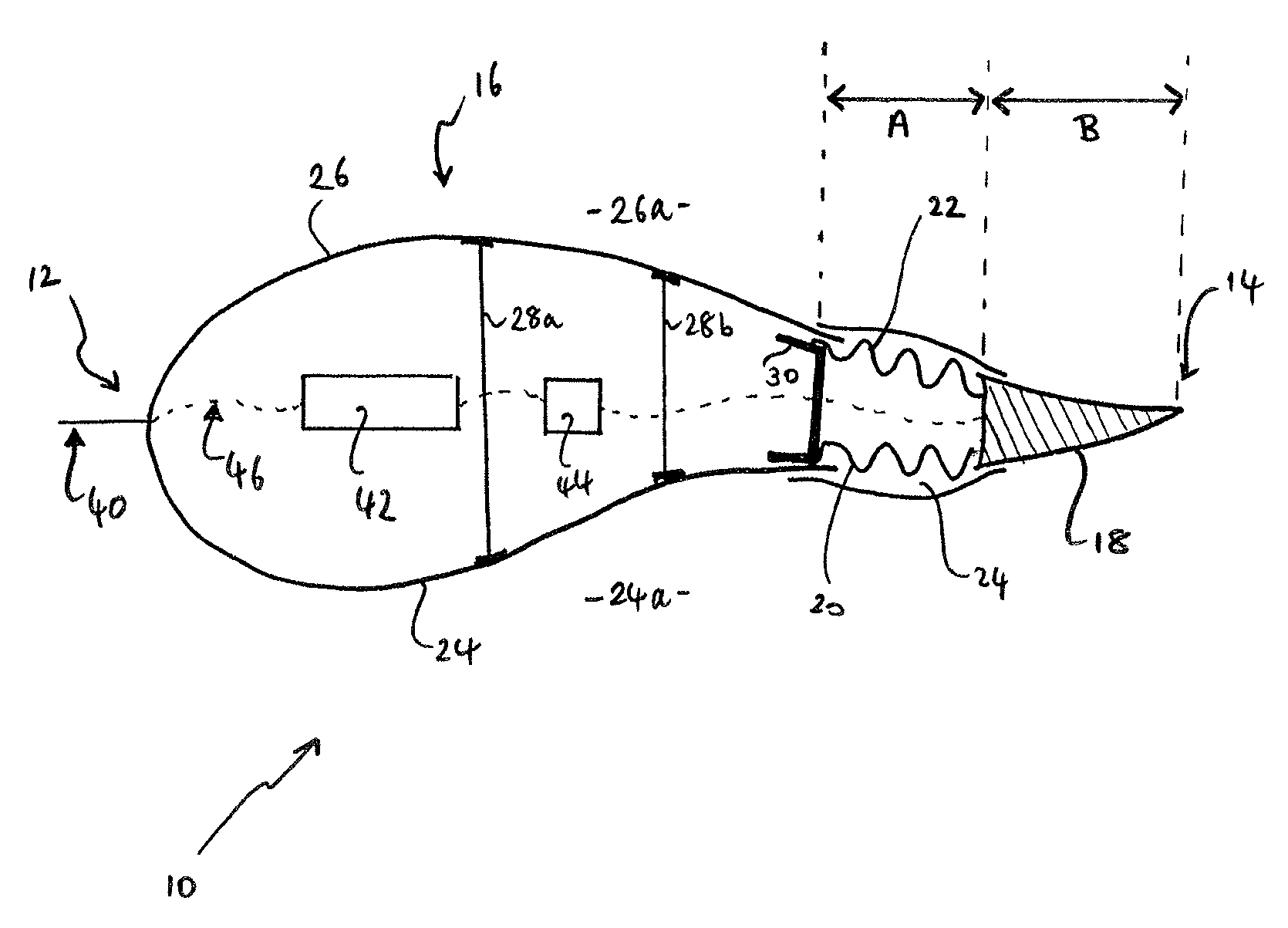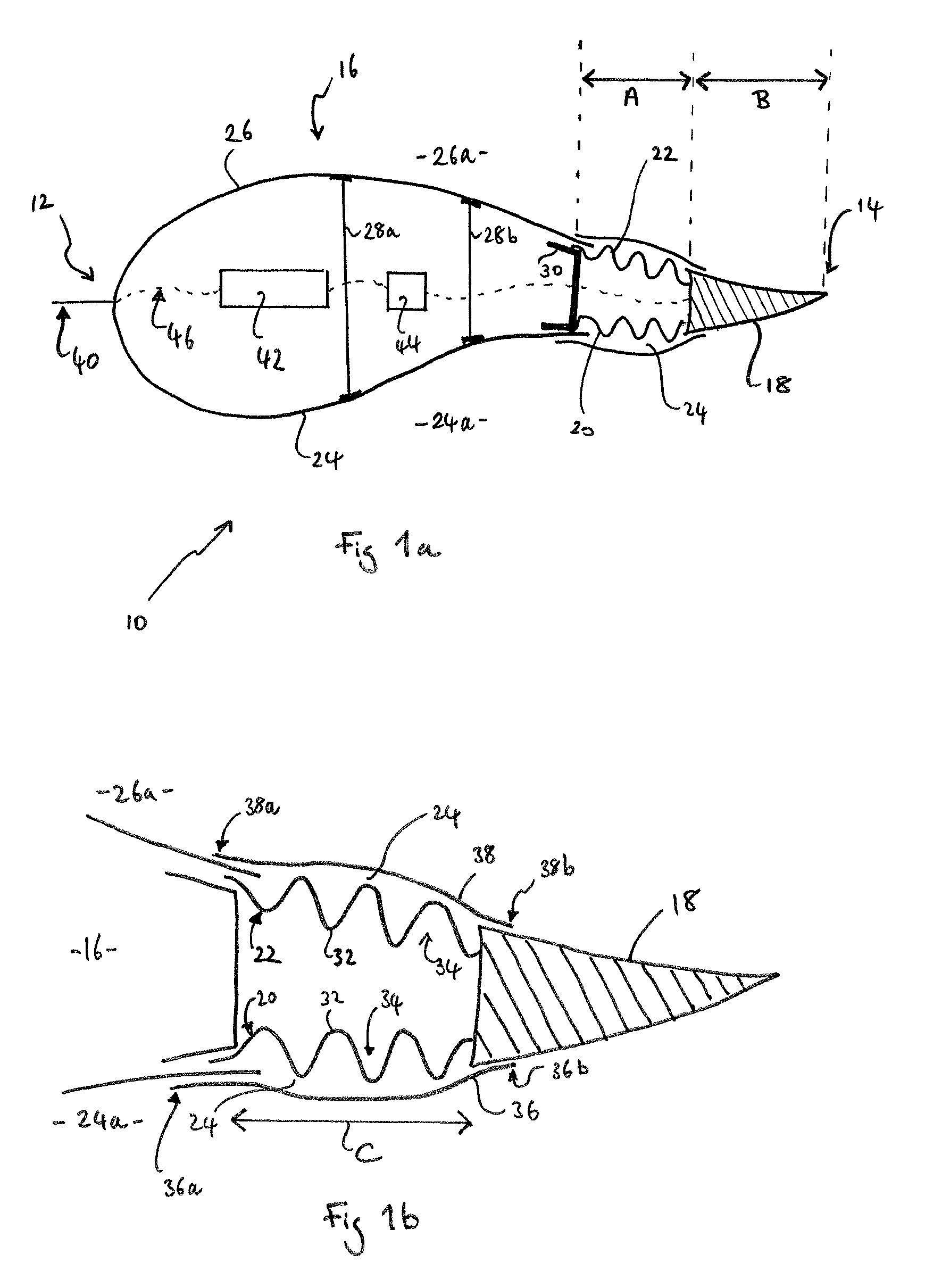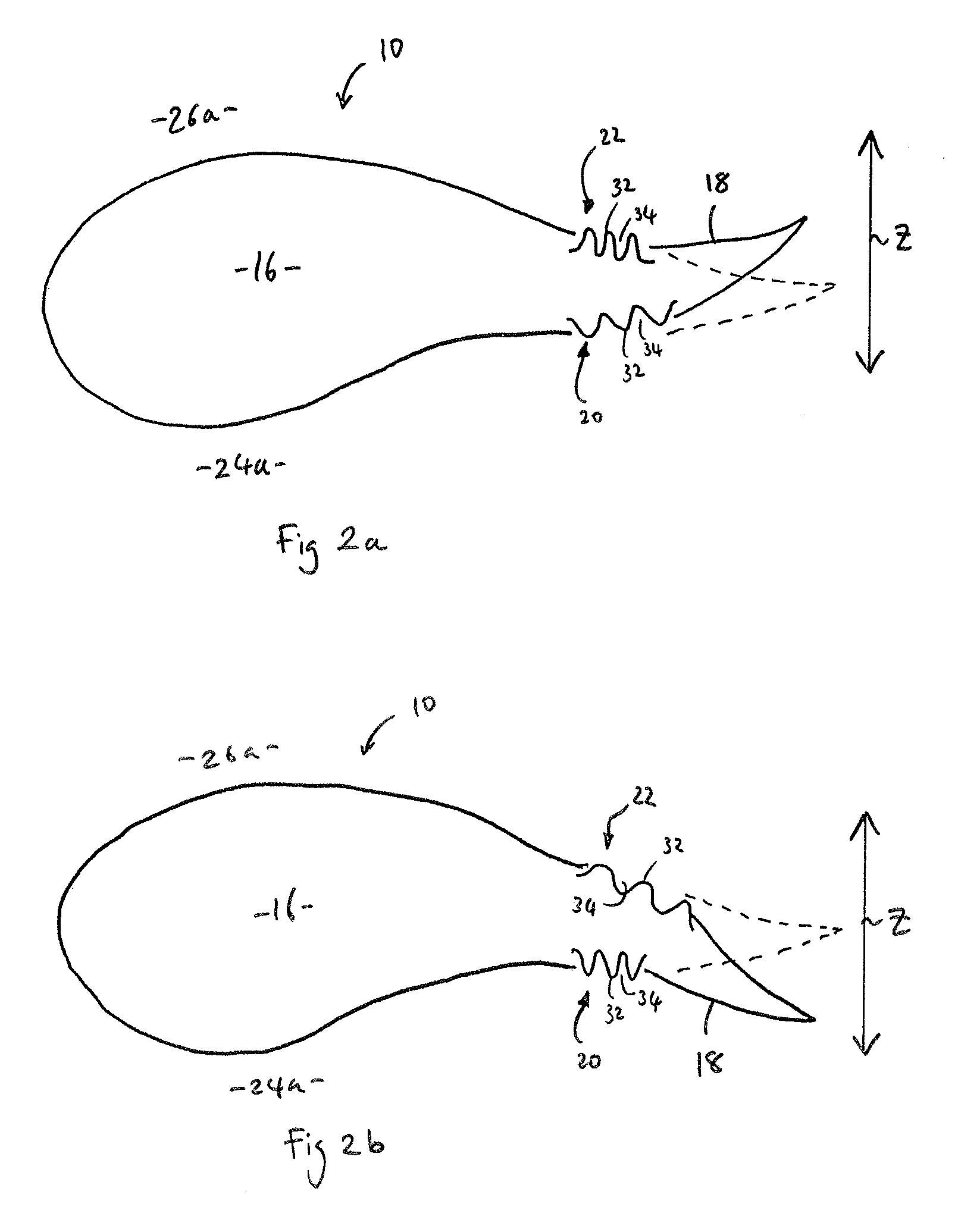Wind turbine rotor blade
a technology of wind turbines and rotor blades, which is applied in the direction of wind turbines, motors, and propellers, can solve the problems of reducing the efficiency of wind turbines, aerodynamic noise and excessive drag, and the bearings tend to be the main failure points, so as to reduce the ability of the panel to flex, improve the aerodynamic performance, and shorten the life
- Summary
- Abstract
- Description
- Claims
- Application Information
AI Technical Summary
Benefits of technology
Problems solved by technology
Method used
Image
Examples
first embodiment
[0050]FIG. 1a shows an aerodynamic airfoil cross-section of a wind turbine blade in accordance with the present invention. The blade section 10 extends in a chordwise direction from a leading edge 12 to a trailing edge 14, and has a camber in the chordwise direction. The leading edge 12 is defined by a blade body 16, and the trailing edge 14 is defined by a trailing edge flap 18. The trailing edge flap 18 is attached to the blade body 16 via first and second deformable panels 20, 22 in a junction region 24 of the blade 10. The deformable panels 20, 22 each have a chord length of approximately 10% of the chord length of the blade (as shown by arrow A) whilst the trailing edge flap 18 has a chord length of approximately 20% of the chord length of the blade 10 (arrow B).
[0051]The blade body 16 is manufactured from first and second half shells 24, 26 of E-glass fibre reinforced epoxy resin (E-GFRP), which are joined together substantially at the leading edge 12 of the blade 10. The firs...
second embodiment
[0062]FIG. 4 shows a trailing edge flap 50 of a wind turbine blade in accordance with the present invention. In this example, the trailing edge flap 50 is attached to a blade body 52 via a corrugated panel 54 on a suction side 56 of the blade at a junction region 58 between the blade body 52 and the trailing edge flap 50.
[0063]In contrast to the first embodiment, there is no corrugated panel on a pressure side 60 of the blade. Instead, the skin 62 on the pressure side 60 is broken at the junction region 58. A longitudinal gap 64 is defined in the pressure side 60 of a C-shaped web 66 between the blade body 52 and the trailing edge flap 50. An end portion 68 of the skin 62 on the pressure side 60 of the trailing edge flap 50 extends through the gap 64 into an internal region 70 of the blade body 52. This arrangement provides a sliding joint between the trailing edge flap 50 and the blade body 66 on the pressure side 60 of the blade.
[0064]The solid line in FIG. 4 represents the traili...
PUM
 Login to View More
Login to View More Abstract
Description
Claims
Application Information
 Login to View More
Login to View More - R&D
- Intellectual Property
- Life Sciences
- Materials
- Tech Scout
- Unparalleled Data Quality
- Higher Quality Content
- 60% Fewer Hallucinations
Browse by: Latest US Patents, China's latest patents, Technical Efficacy Thesaurus, Application Domain, Technology Topic, Popular Technical Reports.
© 2025 PatSnap. All rights reserved.Legal|Privacy policy|Modern Slavery Act Transparency Statement|Sitemap|About US| Contact US: help@patsnap.com



